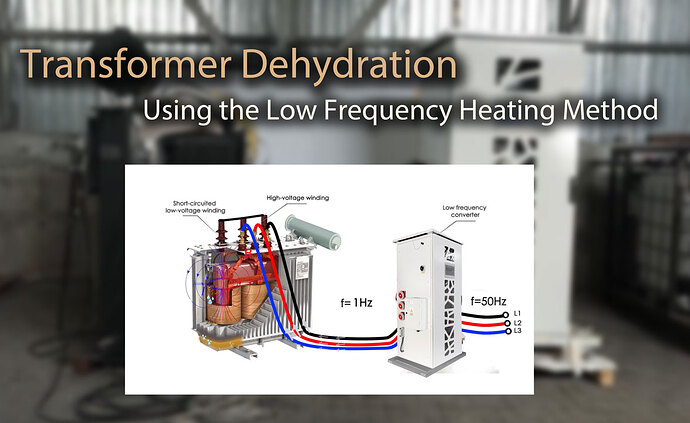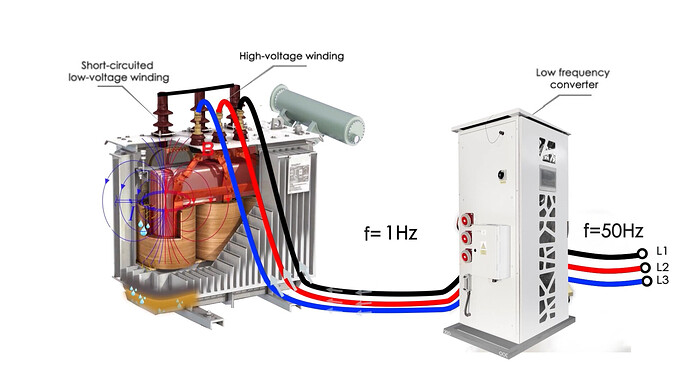Insulation is an essential component in transformer construction, but it is also the most susceptible to damage and degradation. The duration for which a transformer will function efficiently can be directly tied to the service life of its paper-based insulation.
Moisture is a major factor that affects the longevity of insulation. When paper insulation is exposed to water, it can cause the destruction of the cellulose molecules, which results in a decreased electrical strength.
This decrease in electrical strength can lead to the transformer’s malfunction and eventual failure. To mitigate this risk, it is imperative to remove water from the winding insulation throughout the entire life cycle of the transformer.
The dehydration process for transformer insulation can be performed with or without removing the windings, depending on the location of the unit and the ease of access during maintenance.
-
If the transformer is installed in a hard-to-reach location, it may be necessary to remove the windings to perform the dehydration process effectively.
-
If the transformer is installed in a more accessible location, the dehydration process can be performed without removing the windings.
Transformer Drying Technologies
To protect the solid insulation in transformers from the damaging effects of moisture, several drying technologies have been developed for various applications.
Removal of the transformer windings allows for the insulation to be dried in a vacuum oven. In instances where removing the windings is not practical, several other methods can be used to dry the insulation, including the use of:
- Hot air blowers
- Continuous transformer oil drying units
- Thermal vacuum dryers
- Vacuum water vapor freezing units
Low Frequency Heating
One of the most advanced and efficient methods of drying transformer windings is the low frequency heating method. This method has proven to be highly effective in extracting water from the insulation and also saves time and energy in the process.
Low frequency heating is considered one of the most advanced technologies in terms of its efficiency in water extraction and its ability to conserve time and energy. This is achieved by taking advantage of the heat that is generated by the flow of electrons through a conductor.
When using this method, the high-voltage windings of the transformer are supplied with a low frequency current (1Hz), while the low-voltage windings are short-circuited. This causes a controlled current to flow in the low-voltage windings due to the magnetic coupling between the high and low-voltage windings.
Transformer Low Frequency Heating Diagram. Photo: GlobeCore.
As a result of the low-frequency current flow, the windings are heated from the inside to a temperature of around 110-120°C, which is considered optimal for drying. To ensure that the windings do not become overheated, their temperature is monitored constantly during the drying process.
The low frequency heating method is a more efficient and effective way to dry the winding insulation compared to other heating methods. This is because the heat source is generated by the windings themselves, resulting in a faster and more complete removal of water from the insulation.
The low frequency heating method is a versatile technique that can be used in a variety of applications to dry the insulation of transformers. This method is especially effective in extending the service life of transformers by removing water from the winding insulation, which can cause damage and decrease the electrical strength of the transformer over time.
New Transformers
When drying new windings, the low frequency heating method can be used in conjunction with vacuum chambers to improve the efficiency of the drying process. In this case, the low-frequency currents are used to heat the windings and the water released from the insulation is removed from the chamber in the form of steam through evaporation.
Service-Aged Transformers
For in-service transformers, the low frequency heating method can be used in combination with thermal vacuum drying or vacuum freezing of water vapor to dry the windings. During the heating process, the water from the paper insulation is transferred into the oil, and the oil is then removed using a thermal vacuum dryer, eliminating the need to remove the windings from the transformer.
This low frequency heating method can be used for drying both new and in-service transformers of any size, whether in a repair shop or in the field. By using this method to keep the transformers dry, it is possible to improve their electrical strength and extend their service life.
References
- Transformer Low Frequency Heating Products - GlobeCore
- On-site low-freuqnecy heating LFH drying - Hitachi
- Low Frequency Heating Solutions - ABB


